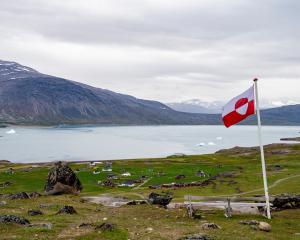
Problems with infrastructure in the Queenstown Lakes District have been highlighted by allegations contaminants have been leaching from the Shotover wastewater treatment plant into the neighbouring Shotover and Kawarau Rivers.
Amid Queenstown's infrastructure woes, the region is growing rapidly.
The Otago Daily Times has tallied more than 12,000 housing units either under way or planned in the region in the next 10 to 15 years.
Queenstown Lakes District deputy mayor Quentin Smith said the region was facing an "overall infrastructure deficit", given the level of growth it was facing, and could not continue to grow beyond the capacity of its infrastructure.
He was "incredibly worried" about the region's hard infrastructure; the demands of Three Waters and transport infrastructure were putting other social investments such as libraries, football fields and indoor sports courts on the back foot.
"While the Project Shotover is a symptom of the challenge, it's by far not the only part of it.
"The deficit, our ability to keep up with it across all sectors from the soft stuff right through to the wastewater, is more than challenging and is certainly the thing that keeps me and others up at night."
Queenstown had some of the highest building consent numbers and relative growth rates in the country.
Infrastructure had the potential to limit growth and create a pinch on the supply and demand of housing.
The rate of growth in the region and its ability to service that growth with appropriate infrastructure was the "No 1 issue" for the district.
"I do think we need to get real about not letting demand get ahead of infrastructure to the point that it either damages our environment or our community, and that's certainly not limited to the wastewater," Mr Smith said.
RCL Group chief executive David Wightman said its developments brought infrastructure for the broader region, which reduced any infrastructural deficit.
It was aware of the challenges at the Shotover ponds, but did not think it would have any real implications on its nearly completed 1700-lot Hanley's Farm development, near Jacks Point.
The Australian development company was also seeking approval through fast-track legislation for its proposed
Homestead Bay development, a more than 2000-lot proposed residential subdivision at the southern end of Queenstown.
Several years ago, Mr Wightman said RCL had been asked by Queenstown Lakes District Mayor Glyn Lewers if it could look at a wastewater solution for the Southern Corridor, as part of the development.
It had since devised a "fairly substantial scheme" that could potentially service a number of future projects in the southern end of the Southern Corridor, beyond its Homestead Bay site.
The Homestead Bay proposal included "more comprehensive infrastructure solutions across a number of disciplines", including transport, wastewater and recreation.
Infometrics chief executive and principal economist Brad Olsen said the issues at the Shotover site would be concerning for developers, but could be alleviated when developers and councils got "in the room together" to understand the implications for both parties.
It was important for there to be ongoing planning discussions to ensure that where changes could be made everything did not come to a "grinding halt".
"The talk generally in Queenstown has been for a long time that there was greater need to develop more and more housing and that one of the natural constraints was around infrastructure," Mr Olsen said.
"That's a conversation that has happened in I'm pretty sure literally every council across New Zealand."
But Queenstown had experienced "such strong population growth for such a period of time" that the buildup of those pressures were felt a lot more directly in Queenstown and the surrounding areas, he said.











